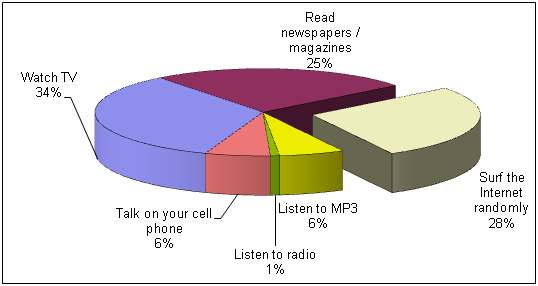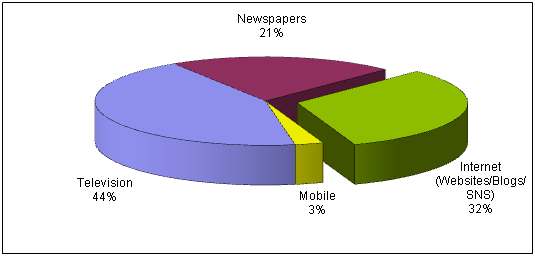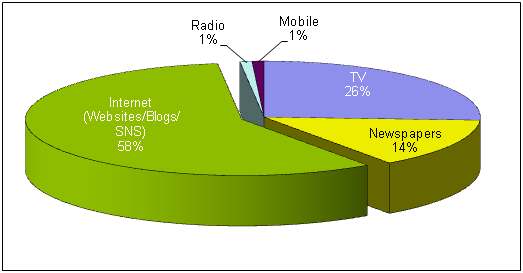Manoj ‘Night’ Shyamlan when asked how does he heightens the frightful experience in his films, replied that it was about evoking the basic human emotion – fear of unknown. It’s this fear of unknown which creates panic in terror situations like the one witnessed in Mumbai. And knowledge (information in this case) is the antidote to it. It is important that while on one hand we have National Security Guards planning a detailed and thorough rescue operation, the communications wing (don’t know if anything like this exists currently) of the government provides correct and timely information to common man.
While watching the brutal and cowardly acts of the terrorists on TV and Internet, I strongly felt that social media could have been put to better use by the official agencies. It is as much important to give out news to people as it is to evict those terrorists especially when people from all over the world have been held hostage. Mind you, by giving out news, I am not even for a second hinting at giving out NSG’s operational details!!
Social media has been blamed for spreading rumours and incorrect information. Also for sensationalizing event coverage. That’s rather unfair. Firstly there are couple of things that everyone must appreciate as a given of changing times.
Firstly, social media is here to stay. Condemning it is not the solution. Using it to your advantage is. Secondly, Internet is as important a medium as others for capturing information. The younger audience especially in Mumbai attacks was glued on to the Internet as much as their TV sets.
So what are some of the things that we could have done differently for news dissemination in times of terror?
1. Appoint a Media Manager:
The person appointed as Media Manager will be sole spokesperson for the entire crisis. For the traditional and social media he should be the one point contact for all information, queries, clarifications, requests etc. This will reduce the chaos considerably as all reporters will not run around interviewing every officer on site.
Create a separate enclosure for TV crews and if possible a section for the media manager to address the press. This will ensure that the TV cameramen don’t have to lift their tripods every time there is an update to be given. This would of course be dependent on the area and kind of terror attack. While viewing telecast of events yesterday I saw the chaos that happened when DG of NSG wanted to give a statement. All the press crew ran towards him and there was so much commotion that his address to the nation got cancelled.
2. Use social media:
I don’t want to devote too much space in this blog post on how much of social media has been used. Reports indicate that there were 80 tweets happening every five seconds on this topic in the last 3 days!! Bloggers played a key role in providing missing links to information got from TV.
The Media manager in this case would have his team who will use social mediums effectively to give out information.
Official Blog:
The official government blog could have had continuous updates on the developments on each of the 3 terrorists sites where commando operations were on.
Being an official blog, even the traditional media will check on it before voicing unconfirmed reports thereby reducing rumours.
There would be sanctity to number of casualties being quoted. Because there was no official source, bloggers updated information that they presumed was correct which in its own way added to more panic.
Several international media agencies will take information from there. By subscribing to blog feeds, whenever that blog is updated, the subscribers get an automatic update informing them on the same.
Photo and Video Sharing Sites:
The blog analogy applies over here too. Distinctly there was a need for footage to be screened out to people. During the entire coverage, each news channel claimed some sort of exclusivity of sorts. That really baffled me coz all of them were lined up together outside all the 3 terror locations. Guess it’s an attempt to gain those extra TRPs. By uploading video snippets and pictures on the official site and community, you satiate that need of the people to see what is happening. The journalist at the site can do quality reporting if the pressure on that person is reduced to show exclusive shots only.
Microblogging:
Or rather plainly put tweets as it’s become insanely famous in the last 3 days. Twitter is just one of the companies providing it. There The official tweets could have been good announcement boards to keep people abreast with the developments. For example, when the rumour of CST firing started again spread, instead of banning cable everywhere these official social media tools could have helped in informing people and press that it is a false story.
Social Networking Sites:
Along with blog, the communities created on the social networking sites could be used to give out valuable information like hospitals which require blood donation, emergency helpline numbers, donation drives, information about important institutions being closed for that period etc
Some might say that there is no time to set up all these platforms. I don’t agree. For one you just have to register only once in all these platforms. And second people who are using these will agree with me that updating information is not a more time consuming process than filming, editing and screening it on channels is!!
Also this is not about social media against traditional media. The role that the reporters performed in coverage of the terror incident is exemplary. They stood there day and night without fearing for their lives and in a lot of ways built pressure on the government for quick act. My post is more about leveraging social media along with traditional media to gain maximum advantage.
Giving out information on social media will create some sort of order and hopefully stop rumours as official version will be available for people to read. Of course one is assuming that the updates will be timely and accurate from the government side. I am sure we all agree that the family members of the hostages are way too worried to be psyched out further with misleading information.




